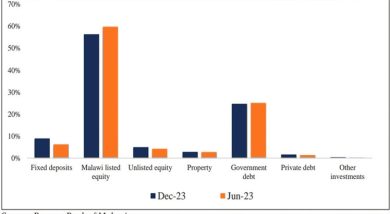No policy yet for village banks—RBM
Reserve Bank of Malawi (RBM) says it has no policy regulating village savings and loan banks in the country.
RBM spokesperson Onilie Nkuna said in a written response to a questionnaire that this is despite the registrar being cognizant of the existence and mushrooming of the village banks.
She said: “The Registrar is cognizant of the benefits that would arise from officially recognising the existence of these village banks, as among others, can ably support this informal segment of the financial market, if they are registered.
“However, this is a policy issue that falls within the purview of Ministry of Finance.”
The stance by RBM comes at a time when some village banks have gone overboard to extend credit services to non-members, but with collateral and monthly interests.

Traditionally, village banks are meant to enable the villagers to make savings to the group and get loans from the savings they make. Village banks accumulate savings in form of shares.
The money collected through the shares is then given out to members as loans. The loans are given out depending on the need and repayment capabilities of the borrowing member.
The borrowers pay interest on the loans to make their fund grow and the rates are agreed by the group. The rates normally range from 10 to 20 percent per month.
But contrary to this arrangement, some village banks which are mostly being set up in towns and cities are providing finance to small and medium enterprises (SMEs) like a commercial banks, making them an attractive venture for credit access for entrepreneurs.
This means government is losing out on revenue through tax and fees.
The mushrooming of village banks might in part be due to dilly-dallying to introduce community banks, which government said will be restricted on deposit mobilisation and lending to their specific locations, among other regulations.
World Bank figures show that currently, only 10 percent of medium enterprises, 5 percent of small enterprises and 3 percent of micro enterprises access credit from commercial banks.
This is despite the country having 60 percent of businesses being microenterprises (employing 1 to 4 people), 32 percent being small enterprises (employing 5 to 20 people) and only 8 percent being medium enterprises (employing 21 to 99 people).





